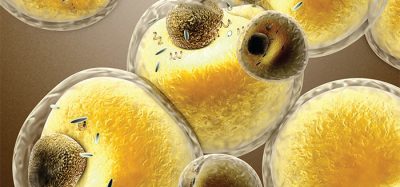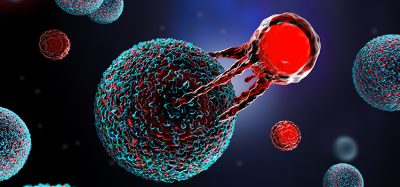Expert view: Rising growth of the global high‑content screening software and services market
Posted: 11 June 2018 | Jeff McMillan (Senior Product Manager Imaging at Molecular Devices) | No comments yet
The global high-content screening (HCS) software and services market accounted for over $500 million in 2017 and is expected to reach approximately $1.4 billion by 2026, increasing at a compound annual growth rate of more than 11%, says Jeff McMillan, Senior Product Manager Imaging, Molecular Devices.
Developments in informatics solutions and high-content imaging instruments, increased focus on cell-based research, and rising government support of research and development for drug discovery processes are some of the key factors driving market growth.
The rapidly rising prevalence of chronic disease has demanded an equally rapid response by the disease research and drug discovery community in both developed and developing countries. Increased funding for efficient live cell imaging techniques is also anticipated to boost the market and the need for high-content screening systems.
To facilitate this growth, instrument and software innovation advancements are needed so that scientists can derive insights from large, diverse data sets to make better, smarter, real-time, fact based decisions. Therefore, the ability to obtain multi-parametric results across cellular populations, and the subsequent downstream processing of complex data sets to distil them into results, are needed. Wider adoption of these technologies by the scientific community has historically been hampered by the monolithic and complex nature of the hardware and software, which, thus far, have lagged compared with the pace of discovery in rapidly expanding and complex research fields. The idea that data creates business value is not new; however, the effective use and organisation of the data acquired is becoming the basis of competition.
Instrument hardware innovations and tools will enable us to see more, but how we translate that information into usable data is critical. The ability to capture business-critical scientific data, analyse it, and then generate and share cross experimental reports in a matter of hours – rather than the current typical days, weeks, or months – is essential and is now a core offering of Molecular Devices’ sister company, IDBS.
On the other side of the spectrum is a trend towards simplicity. Researchers create the greatest value for their organisation when they focus their efforts and time on their research and not on learning how to use the suite of complex instrumentation within their laboratory. Algorithms capable of ‘machine-learning’ or ‘supervised machine- learning’ can greatly enhance a scientist’s ability to generate data without extensive training. Molecular Devices recently launched the ImageXpress® Pico as an easy-to-use imaging system with over 25 pre-configured analysis protocols available, which leverage this capability to quickly define the population of interest with the click of a mouse. In addition, it features a browser-based, icon-driven software that enables untrained scientists to easily access their data anytime and anywhere.
Other trends observed include the push towards models with heightened physiological relevance to better assess drug toxicity and validate targets. Of particular note are microfluidic chips lined by living human cells, also known as ‘organ-on-achip’ or ‘body-on-a-chip’. This technology has the potential to revolutionise drug development, disease modelling, and personalised medicine.
These microchips offer an alternative to traditional animal testing and can potentially offer a quicker path to clinical trials. Molecular Devices and others are partnering with companies who specialise in these models. This technology is being analysed with the ImageXpress® Micro Confocal High-Content Imaging System as well as the FLIPR Tetra® System to deliver both the cell-to-plate level detail offered by high-content imaging and the ability to capture rapid kinetics on a true highcontent screening system. These systems are increasingly being adopted in the drug discovery and development space and are one of the drivers in the continued growth of HCS systems. To learn more about this technology, visit www.moleculardevices.com/ StemoniXwebinar.
Related topics
Drug Discovery, Drug Discovery Processes, Imaging, Informatics, Microfluidic Technology, Organ-on-a-Chip, Personalised Medicine
Related organisations
Molecular Devices
Related people
Jeff McMillan







